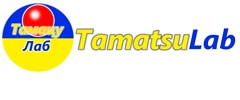North Macedonia
Location
It is a landlocked country bordered by Kosovo to the northwest, Serbia to the north, Bulgaria to the east, Greece to the south, and Albania to the west.
Area
Approximately 26,000 km2
Capital (approximate population)
Skopje(510,000)
Business-related cities other than Skopje (approximate population)
Bitola(75,000), Kumanovo(70,000), etc.
Population
about 2.08 million
Racial Composition
64% Macedonian, 25% Albanian, 4% Turkish, Other
Language
Macedonian, Albanian
Religion
The Eastern Orthodox Church predominates.
- Xhamia e Larme
- Orthodox Church "Saint John the Theologian"
Culture
It has a rich cultural heritage of art, architecture and poetry, as well as Byzantine church-influenced music.
- Skopje Fortress
- Macedonia Square
- Vrv Vodno
- Canyon Matka
Education
North Macedonia's education system consists of early childhood, primary, secondary and higher education.
- Ss. Cyril and Methodius University
- Goce Delchev University
- Universiteti i Evropes Juglindore
- Rectorate of the University St. Clement Ohridski Bitola
- University for Information Science and Technology "St. Paul the Apostle"
- International Balkan University
- Rectorate of the University St. Clement Ohridski Bitola
Overview of the modern and contemporary history of North Macedonia
1914 World War I breaks out. North Macedonia, which was incorporated into Serbia, is occupied by Bulgaria
1918 World War I ends. Macedonia becomes part of Serbia again. Kingdom of Serbia, Croatia and Slovenia established.
1929 Kingdom of Serbia, Croatia and Slovenia renamed Yugoslavia.
1945 Foundation of Yugoslav Socialist Union, consisting of six republics, including the People's Republic of Macedonia (future North Macedonia)
1980s Rise of nationalism within the Union
1991 Changed name to Republic of Macedonia. Independence from the former Yugoslavia. Greece opposes name Macedonia
1993 Joined the United Nations as the former Yugoslav Republic of Macedonia
1995 Greece recognizes independence
1997 Banned the Albanian flag. Massive protest
1998 Kosovo conflict begins
1999 NATO bombing of Yugoslavia
2001 Armed uprising by Albanians. NATO-brokered ceasefire, reconciliation. Approval of a new constitution that recognizes Albanian as an official language
2004 Application to join the EU
2008 Macedonia recognizes Kosovo. Serbia protests
2019 Country name changed to "North Macedonia"
2020 NATO membership
Politics
It is a parliamentary democracy and the president is the head of state and commander-in-chief of the military. The role of the president is ceremonial, and executive power is in the hands of the prime minister. The legislative branch is unicameral.
- Assembly of the Republic of Macedonia
- Villa "Vodno"
- Supreme Court of the Republic of Macedonia
GDP per capita
$6,143
Economy
After independence, it is said that the economy has been reformed and has continued to grow steadily.
Europe
Ukraine, Finland, Sweden, United Kingdom, Denmark, Ireland, Netherlands, Switzerland, Norway, Germany, Austria, France, Belgium, Italy, Spain, Slovenia, Portugal, Czech, Hungary, Estonia, Poland, Slovakia, Latvia, Greece, Romania, Croatia, Lithuania, Bulgaria, Russia, Iceland, Belarus, Moldova, Northern Macedonia, Albania, Luxembourg, Bosnia and Herzegovina, Cyprus, Serbia, Montenegro, Andorra, Kosovo, San Marino, Vatican, Malta, Liechtenstein, Monaco
-- Return to World Region Information --


